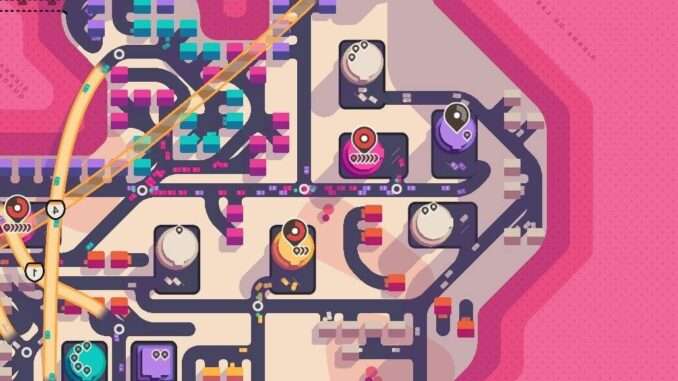
So you’re getting 3k points consistently and want to push higher? A guide on lesser known advanced mechanics, the basics aren’t covered in this guide.
Lesser Known Advanced Mechanics
Introduction
So you figured out the basics, segregate your roads, don’t let traffic cross wherever you can and use diagonals roads as much as you can. Now with a bit of practice you’re easily getting 2.5k+ every game as you’re able to smash through the early and mid game. Now you want to know how to start pushing for higher scores to get into the top 200. All of those tiny efficient changes you can make and obscure mechanics. Well that’s what this guide is for, I hope you learn something helpful.
Terminology
- Shops: the destinations.
- Skyscrapers: circular shops.
- Neighbourhoods: houses of the same colour spawn in clusters, future houses of these neighbourhoods spawn within two blocks of another house in the neighbourhood.
- Early game: From the start of the game up until roughly 1000 points, in this phase of the game you can frankly make all of the wrong choices and you’ll be fine, roads are quiet and you can happily connect lots of roads you’ll want to segregate for the purpose of conserving roads so you can use them in blocking.
- Mid game: You need to start segregating here as traffic jams are now possible, this is where you’re setting up the major paths you’re going to be carrying through into late game. This phase ends when all of the shops have spawned and house spawns start being irratic with seemingly random colours being dotted into gaps.
- Late game: The map is close to full, re-routing is basically limited to already established roads and areas you blocked off. Now it’s all about keeping throughput as high as possible and blocking for the purpose of ensuring predictable future house spawns are able to access destinations. Re-arranging major roads or motorways at this point in the game is a death sentance unless you have a spare motorway you can use to maintain traffic while you rebuild.
Driveways
- Driveways aren’t junctions. Yes driveways do slow down your cars compared to max speed, however they don’t slow your car down anywhere near as much a junction. Taking visible estimations I’d estimate the ratios as: max speed: 1, driveway slowdown: 0.9, junction speed 0.25. I’ll correct those values if anyone in the comments has quantified the difference in speed by counting frames for a full speed car (5 uninterrupted blocks of space to speed up), driveway slowdown, and junction slowdown. The practical result of this is that assuming you have no roundabouts or traffic lights to spare, when hooking up houses to a shop you should path the road so that all of the houses connect directly to the road with their driveway to avoid creating junctions
Bad:

Good:
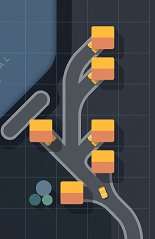
- Shop entrances and house entrances are both driveways. So if you’re connecting a neighbourhood to two or more shops (which I recommend you always avoid if feasible), if you don’t have a traffic light for an efficient junction, then don’t create a junction at all and instead just connect from one shop driveway to the other.

Or if you’re going from two groups of houses to a shop and you have no roundabout or traffic light, have the two roads meet at the shop driveway, and not at an intersection.
Bad:

Good:
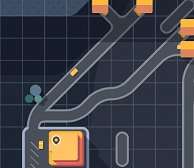
- Don’t cluster your driveways, yes clustering your driveways will give cars one or two extra blocks to speed up, this is a worthwhile reason to do it if they’re directly next to a junction. However, you’re screwing your throughput as clustering will cause small traffic jams as cars fight to all turn in different directions in that one block, cars also have a slightly longer distance to drive if you’re pulling driveways back away from the shop to cluster them.
Bad:

Good:

Traffic Lights, Roundabouts, and Junctions
So there seems to be a general consensus across youtube, steam and so on that traffic lights are useless compared to roundabouts or that even regular junctions are better (they aren’t). The reality is that both have different use cases, advantages and disadvantages:
- Traffic lights significantly help with throughput at three way junctions. At four way junctions they’re barely worth using if the vast majority of traffic is taking one path and on a rare occasion a car needs to cross over. For example if you needed to get a single red house over a green highway.
- Roundabouts are significantly better than traffic lights for any junctions with more than three intersecting roads. For T junctions however (three way) I’d arguably they’re equally as effective or slightly worse than traffic lights since the last update which buffed traffic lights. This is mainly due to how roundabouts currently don’t work like they do in real life, in game cars on the roundabout give way and stop for cars entering it. This causes minor traffic jams under high traffic where a simple traffic light doesn’t have this issue. On a couple of occasions I’ve seen extreme traffic on a roundabout cause a blockage where the cars are completely stuck.
- You get two traffic lights compared to one roundabout when choosing options on Sunday, and roundabouts require a three by three space to be placed. As a result, unless you need a roundabout for a junction with more than three entrances, as long as you have a roundabout in reserve for the early and mid game, traffic lights are the superior choice (controversy incoming). Late game the map is packed full, your roads should all be segregated with no new four way intersections, old four way intersections ideally removed. At this point of the game new roundabouts are close to useless and the value of traffic lights will rise as throughput becomes more and more critical to avoid losing the game.
In summary, you’ll probably never need more than two roundabouts for a game, but they’re invaluable for solving issues where roads need to cross early and mid game and can massively help with conserving how many roads you use. Late game where you’ll struggle to fit in a roundabout, you get less of them than traffic lights, and their niche for more than three entrance junctions being no longer needed, traffic lights are the better choice. If you’re able to safely avoid needing roundabouts in early and mid game then you’re setting yourself up better for late game.
Obscure Mechanics
- Ever wondered why very late game box shops which should demand half of the traffic that skyscrapers do can end up demanding far more than half and often end your games? If a pin can’t be added onto a shop because it already has full pins on the timer then it’ll add the pin to another store of the same colour instead. As a result, a busy late game skyscraper on one side of the map can result in a shop on the other side of the map demanding more traffic than it otherwise would. Knowing this though, you can also potentially mitigate traffic needs to a shop by improving the throughput of completely different shop of the same colour.
- Extremely long motorways correctly cause cars to move at very high speeds, however for some reason the cars from the motorway don’t decelerate until after they leave the motorway allowing them to maintain extreme speed for an extra 10 blocks or so.
Need to Know Bugs
- Never have both a road and a motorway directly connected to a shop driveway where both the road and motorway need to access the shop. It can bug out and cause a traffic jam that’s permanently stuck.
- Roundabouts prioritize cars entering the roundabout instead of cars already on the motorway, this makes them prone to traffic jams getting completely stuck if you have extreme traffic and lots of entrances (which you should be trying not to do anyway).
- Motorways which connect with a 1 block piece of road to a shop sometimes cause cars to bug and stop moving in the shop.
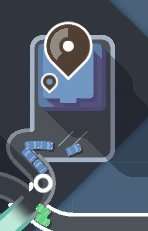
Blocking & Spawn Mechanics
There are plenty of very undesirable spawns you can get in this game, blocking allows you to avoid these and there are very obvious advantages to that, blocking keeps you alive by preventing spawns that screw current and future paths, keeping critical pathways available. It does come with a key disadvantage which I’ll cover first:
The more shop spawns you block and the more you space them out the fewer total shops you’ll have spawn, and you may be delaying a shop spawn that could’ve been giving you points during that time. Someone who doesn’t block at all may manage to fit in lets say 23 shops, compared to blocking giving you only 20. Of course with more shops squeezed in, finding efficient paths will be more difficult for them and it will probably kill those players.
However having more shops comes with the advantage that your maximum possible score will be higher and your score will rise faster. As weeks go by, the rate at which pins spawn on shops will increase until it’s impossible for your throughput to meet the demand. As a result you want to have as many points coming in as possible before you hit that point in time, more shops means more traffic and more points. Overzealous blocking is detrimental for this reason, and you should always consider if any of your blocks may be ruining a perfectly good shop spawn.
Now then, here are some scenarios where blocking should be considered:
Blocking tight or important pathways you are likely to need in the future
This is simply a tight space where a house spawn could prevent access that will be important later on.
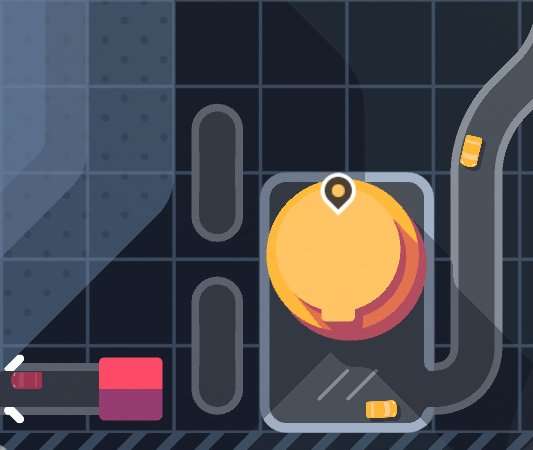
Houses often spawn along cliffs meaning you can’t run roads behind them which is often helpful, so I reserve that path. I also ensure that no shops spawn in this canyon between the cliffs.
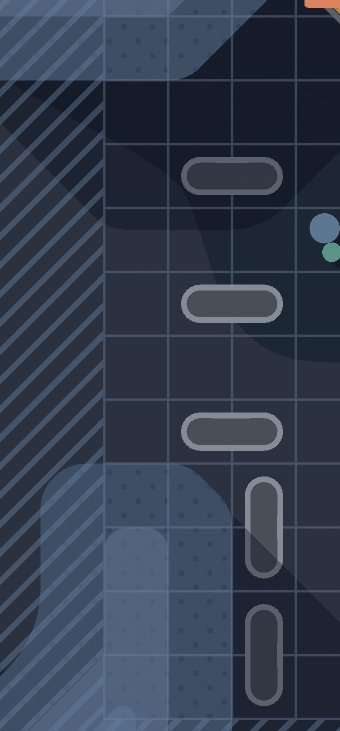
Keeping spawns off of the cliff and waters edge
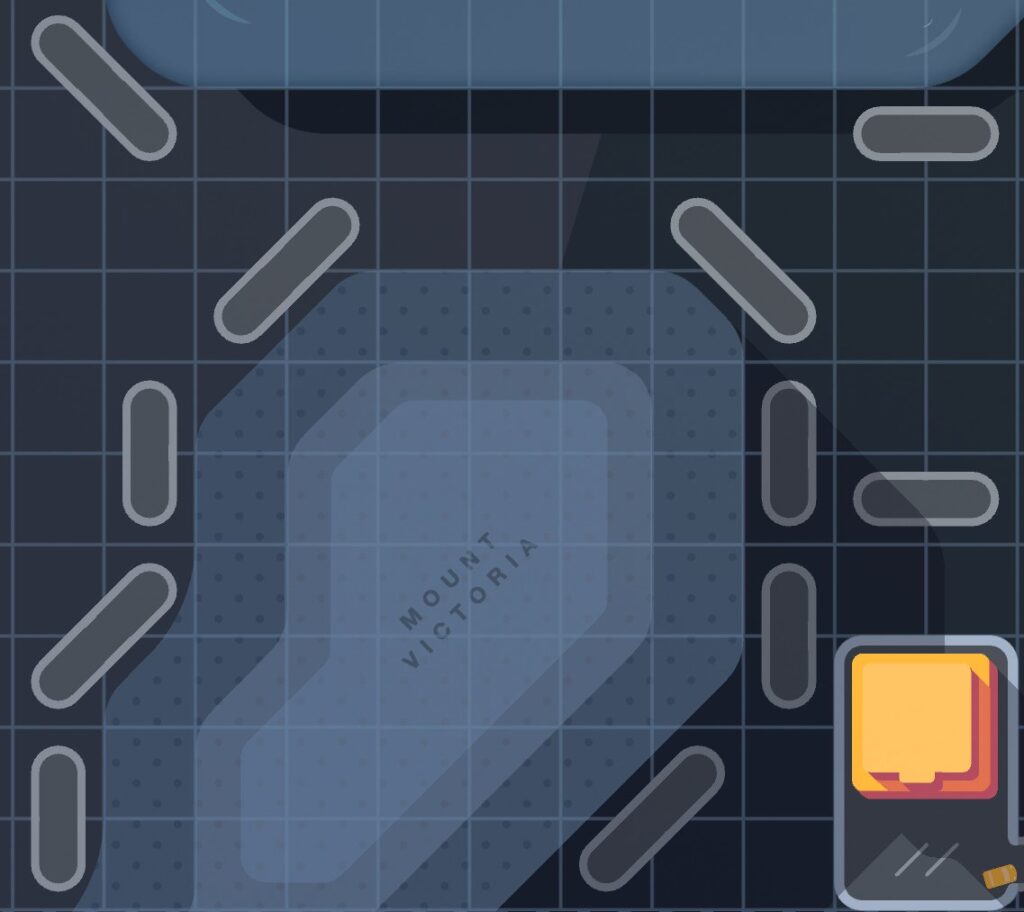
Ensuring future house access by preventing house spawns which would prevent access to the rest of the same neighbourhood
I want to avoid a red house spawn between the existing houses and the yellow shop which would mean any future red house spawns below would have no access to the road they need to be on.
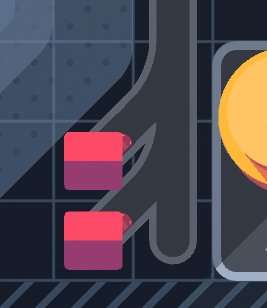
Here there are no yellow house spawns that would completely block me, however a spawn in either of the blocked locations would result in needing a road to loop around to future houses spawning on the high right side of the neighbourhood.

Penning in neighbourhoods to control which direction it should expand in
Here I can force house spawns to be closer to the shop they’re going to as well as avoiding having houses spawn where they’d need go around several blocks to hook up to the preexisting houses.
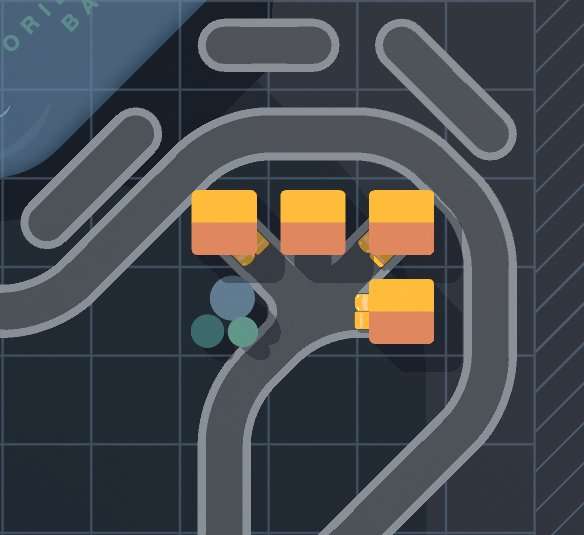
Here I’m forcing future blue houses to spawn into two specific spots and then the game will be forced into creating a new blue neighbourhood if it wants more blue houses. I’m also maintaining access to the blue road out of the bottom as I know that’s a common area for blue neighbourhood spawns and I’ll likely need it.

Here’s the same spot as the previous image, yet I’m penning on one side and blocking for future house access on the other to control the spawns.
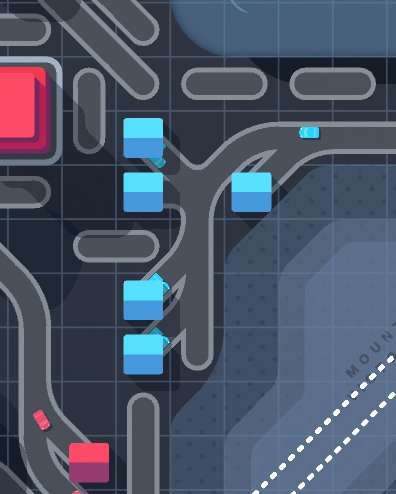
Ensuring shops won’t spawn with their driveway touching existing critical roads or within one tile of existing shops
Keeping roads segregated is incredibly important. So at all costs we want to avoid shop spawns that prevent us from running roads around this red shop or force us to have a road providing access to multiple shops with a bad driveway placement.
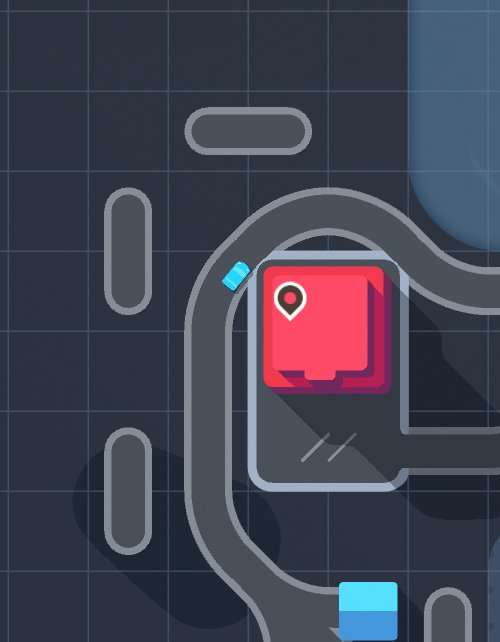
A simple go to strategy is providing a two block border around existing shops to help ensure you can route effectively in the future without a shop dropping itself in the way.
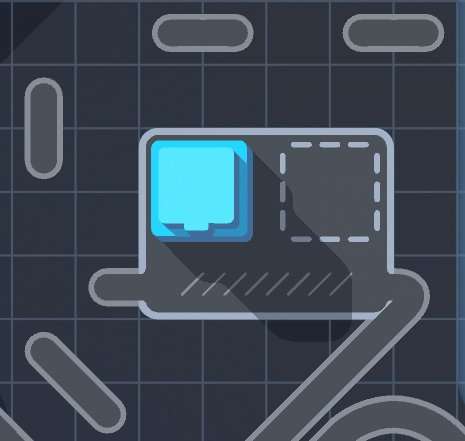


Be the first to comment